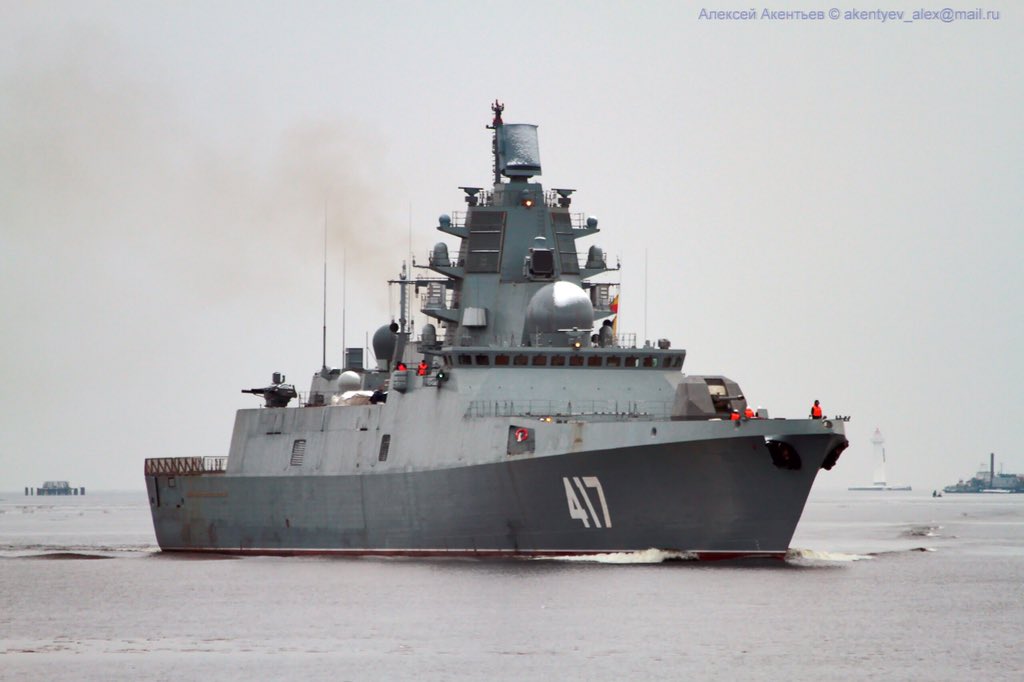Can the German Navy Be Saved?
- In a country where good news stories about the military are few and far between, recent years had been kind to the German Navy.
The first author of this article, John Beckner, is a Defence and Aerospace Consultant and has been living and working in Europe (Brussels/Munich) since the late 1980’s. He has been a keen observer of European and NATO defense policy; both in industry and working for the U.S. Government.
The second, Helmoed Heitman, is an author, journalist, and independent defence consultant living in Pretoria, South Africa.
Its vessels had been participating with its allies in counter-piracy operations like Operation ATALANTA off East Africa, and its ships have been involved in refugee rescue in the Mediterranean Sea as well as weapons interdiction off the coast of Lebanon. Pictures of German Navy vessels assisting in the rescue of bedraggled refugees portrays the public face of the Bundeswehr in a way no
Eurofighter or
Leopard 2 tank ever can.
Public perceptions notwithstanding, the mission of the Marine is to fill its NATO commitments. Unfortunately, due to poor planning and decision-making, and lack of funding, it is incapable of fulfilling its primary mission requirements. Unless changes are made promptly and quickly, its capabilities will degrade even further over the coming years.
While it is nice to blame “budget cuts,” the Marine’s problems go well beyond a lack of money. The German Navy has major problems with all its major components; submarines, surface ships, and what’s left of its naval air capability.
The Marine has six Type 212 U Boats; none of which are currently operational. While German industry continues to sell similar vessels around the world, and some of its NATO allies operate them on very sensitive SIGINT missions into remote foreign harbors, the German Navy with its long history of submarine development and operation, today cannot even deploy a single submarine on operations – and will be unable to so for some time to come.
On one of its first missions, the new U36 was operating off Norway when it damaged its stern fins “hitting a rock during a dive,” and had to be escorted back to Germany by a vessel monitoring its test program. While mishaps like this happen, it just added to the malaise of the German navy which pioneered submarine operations and design. Even worse U31, the first submarine of the class, has been out of service since 2014 pending completion of repairs.
U32 experienced battery damage in mid-2017 and is awaiting a berthing/repair space. However, U-4 is ‘already in line’ for the next available docking spot which should come available early this year. Thankfully, U33 will (or has just) finished its current maintenance in early 2018 and will be released for Baltic ‘workups’ to return to service. U35, the sister ship of U-6, was commissioned in October of last year but won’t become operational until June.
It boggles the mind that the wealthiest country in the EU cannot even afford to support a U Boat fleet of six vessels. These vessels are designed for the Baltic and due to their hydrogen fuel-cell propulsion system can stay underwater for as long as two weeks. While this sounds rather benign, operations in the Baltic are difficult due to shallow water, and even more difficult since their peacetime mission requirements involve dangerous stealthy operations to gain intelligence on Russian ports. The Type 212 U Boats are the optimal submarines for these missions, so it is a particular pity that they sit in dry dock waiting for spares that should be readily available. Today, other countries’ submarines take up this slack and perform this mission since Germany spends too little on its military to fund an adequate support infrastructure for these vessels. One shudders to think how long it would take Germany to up the readiness of its tiny U Boat fleet should the Russians become more aggressive against the NATO Baltic countries.
In 2010, the last German MPA
Atlantique aircraft followed their fast-jet
Tornadobrethren into retirement. To make up for the lack of capability, in 2005, Germany decided to acquire second-hand Dutch P-3C aircraft. While some grumbled that replacing an expensive to operate two-engined aircraft with an expensive to operate four-engined aircraft made little sense, there is little doubt that the P-3C is a more capable aircraft than the
Atlantique it replaced. However, wouldn’t it have made more sense to consider the more modern P-8, like Germany’s NATO allies who are all retiring their P-3s.
To make matters worse, it soon became apparent that what the planners failed to account for is that the former Dutch aircraft had too many hours on their air-frames, and they needed all new wings plus a modern tactical system. Cynics claim this was behind the Dutch decision to retire the aircraft in the first place, one
German Navy officer remarking that they were held together by their paint. Then, instead of
competing the expensive structural and avionics upgrades like the USN, and countries like South Korea, Australia, and New Zealand have done, the German Navy took the “easy way out,” and let industry take the lead. Lockheed Martin is under an eight (8) year sole-source FMS contract to perform the upgrade.
The structural program consists of eight kits which include the outer wing, centre fuselage, and horizontal stabiliser. According to naval experts, no P3C aircraft are operational today. Isn’t there anyone at the BAAINBw HQ in Koblenz (the former BWB) who can run
competitive P-3 upgrade programs like other countries do, or do the cost/benefit analysis to see if buying new aircraft makes any sense?





